Download What`s New - Infant Incubators & Warmers
Transcript
APRIL 2006 VOLUME 7 NO 5 The Leader in Replacement Parts for Healthcare Equipment Since 1972 RPI Expands Line of General More Than Shop Aids ... L a s t Fall when we mailed out the RPI catalog update pages, we included a brand new General Shop Aids section. Did you see it? It was completely revamped and included more than 100 new parts. This section of the catalog has always been dedicated to assorted hardware items and specialty tools that are frequently used in the repair of healthcare equipment - it offers the convenience of one-stop-shopping. styles and colors, high temperature wire, crimp-on wire connectors and crimp tool, heat shrink tubing, and many other electrical items. Hardware. Socket screw kits and a 13-piece L-hex wrench set are highlights in Hardware along with two Pozidrive" screwdrivers and a screw There are six categories in the new General Shops Aids section - with each category full of new items. Here's a recap. Accessories & Supplies. Under this category, you will find different sized storage cases with compartments for easy organization, Threadlocker@, high temp lubricant, heat sink compound, pipe sealant, thread sealing tape, and oilslfluids for compressors, hydraulic exam tables, and rotary pumps. Electrical. RPI now offers a vast array of hospital and industrial grade cords, plugs and connectors, plus an outlet module that mounts on a pole or wall. What's more, you now have a choice between a top-of-the-line Hubbelltmbrand plug or connector and a less expensive alternate brand. Also included under Electrical are receptacles, strain relief pliers and bushings, fuse puller and fuses, cable tie tool and cable ties in various sizes, kit, plus a Phillips head screw kit, a lockwasher kit, and two metric machine screw kits. 0-Rings. There are three full pages of information to help you easily identify o-rings, plus more than 80 different sized o-rings, three o-ring kits, and new o-ring installation and removal tools. Plumbing. Copper tubing is now offered together with a metal tubing cutter and a bender. Compression fittings and barbs with sleeve tools can also be found under this category. W. Under Tools, you will find a variety of every day tools as well as specialty tools. Five Basic Steps to Troubleshooting By Neil Blugmun, RPI Product Development 1. GatherYour Information. Find out as much information as you can about the piece of equipment - keeping in mind that you cannot diagnose the problem unless you have some idea as to how the equipment worked before it malfunctioned. Try to find out what was happening just before the piece of equipment was reported broken. Ask questions of the operator. Operators of the equipment may not know the exact problem, but they will know what they expected to see happen before the equipment malfunctioned. Equipment operators may also know if there was a recent change in the environment, if there were problems with the electricity, if there was work done recently to the electrical supply (remember that compressors and large motors installed on the same circuit can affect existing equipment), or if the equipment was recently moved or relocated. Knowing information like this will help you in the troubleshooting process. Always refer to the service manual if you can or at least try to find an operators manual. 2. &ve the Proper Tools. Have the correct test equipment and a good set of hand tools available, and be sure you are familiar with how to use them properly. Test equipment is your eyes to an otherwise invisible world. What's more, using the proper tools will help prevent a large number of skinned Continued on page 5 THE RPI FAMILY Hello. I am RPI's Warehouse Supervisor – my name is Brian Ridgeway. My overall responsibilities at RPI include ensuring that parts are assembled, packaged and shipped correctly. Same day shipping is a requirement at RPI and we are extremely proud in our department to help make this happen for our customers. Ira Lapides CEO & President Replacement Parts Industries, Inc. Observing the firefighting operations, reading department reports, and viewing the burn areas provide a few interesting lessons and analogies that we can apply to our own businesses. The first is preparation, one of my many ongoing management themes. Before fire season approaches, local fire departments require all homeowners to clear brush a certain distance from their structures to prevent brush fires from spreading to their property. Inspections of affected areas are conducted, fines levied and corrective actions are quickly done. The fire departments also inspect fire trails through the hills and mountains to ensure adequate fire breaks and passage for crew and vehicles. As with any successful department head, I am supported by a very qualified and motivated team of outstanding individuals. I am originally from Columbus, Ohio, and moved to California in 1984. I then met my beautiful wife Diane. We have two wonderful Brian Ridgeway Warehouse Supervisor children, Caroline, age 20, and Joseph, age 15. Caroline is attending Pacific Lutheran University, while Joseph is attending Santa Monica High School. Caroline is an art major and Joseph is a soon to be Black Belt in Karate. Preparation for your business means knowing when your busy season occurs and preparing resources and systems appropriately. It means going through your prep checklist prior to a trade show to ensure that you get the most out of the show. It means conducting all necessary advance work and having all relevant information going into a big client meeting. And, like the fire departments, preparation means ensuring that your team members receive the necessary training to do their jobs well. My son and I are avid fishermen and have many "fish tales" to share – some are even truthful. As the Topanga fire progressed, much could be learned from the crisis management that was required to effectively combat and control the blaze. This included significant interdepartmental coordination between the various agencies and departments involved. This coordination at its root required two key factors: 1) recognition of appropriate authority (who was issuing commands); and, 2) effective channels of communication. As several departments appeared to have varying degrees of responsibility, it was critical to establish authority to ensure that the 3000 firefighters and 12 helicopters were not receiving mixed signals. And, the communication had to flow quickly to ensure orders were effectively and efficiently carried out to Being at RPI is such an enriching experience. It has been a continuous learning process where I am surrounded by team players in a family atmosphere. I really enjoy working here and want to thank our customers for their support. F all in southern California, with our hot Santa Ana winds, means brush fire season. Last year was no exception, with several large brush fires breaking out around the end of September. The largest, called the Topanga fire, started in Chatsworth, only a few miles from RPI. Magnified by the strong winds, the fire burned over 24,000 acres, stopping less than one mile from my home. The fire started right on the border of Los Angeles and Ventura Counties, and spread south and west. Initially, fire crews from those two counties and the City of Los Angeles battled the fire, but with the high winds, it was quickly recognized that more help was needed, and the call went out for help across the state. In the end, nearly 3,000 firefighters (including 100 who were on their way back from New Orleans providing support to the Hurricane Katrina relief efforts) fought the fire, and only three homes and three commercial structures were lost. continued on the back page 2 Replacement Parts Industries, Inc “The Alternate Source” • April 2006 RPI WILL BE ATTENDING THESE SHOWS IN 2006 Stop by and visit us at our booth! CDA (California Dental Association) Apr 27 - 30 (Booth #257) Anaheim, California AAMI (Association for the Advancement of Medical Instrumentation) Jun 24 - 26 (Booth #1001) Washington, DC FIME (Florida International Medical Expo) Aug 16 - 18 (Booth #1732) Miami, Florida MD EXPO (Medical Dealer Expo) Oct 11 - 13 (Booth #64) Stone Mountain, Georgia NCBA (North Carolina Biomedical Assoc.) Dec 11 - 13 (Booth # To be determined) Pinehurst, North Carolina A BIG RPI Welcome To … The five new members of the RPI family! We are welcoming Tina Torres and Linda Bean to our Customer Service Department, as well as Toni Klein who splits her time between Customer Service and our Purchasing Department. Ray Martinez is our new Quality Control Manager, and Kathleen Kowal who has joined our Marketing department. TECH TALK Fluorescent Photo Therapy Lights Not Functioning Proper ly? By Neil Blagman, RPI Product Development Situation: The head nurse of the NICU approaches you as her favorite Biomedical Engineer and says, “The levels of billirubin in our neonates is not falling at the rate I would like to see. Our fluorescent phototherapy lights seem to be functioning properly, but they just do not seem to have the punch they used to.” What do you do? First, some background information. What do fluorescent lights have to do with serum billirubin levels? Phototherapy, the process of exposing newborn babies to ultraviolet light, was discovered in 1956 by Sister J. Ward, a nurse in charge of premature babies in a hospital in Essex, England. Sister Ward would take her patients into a nearby courtyard to expose them to the healthful fresh air and sunlight. She noticed that the skin of infants who had developed jaundice at birth would soon “bleach”, and the yellow cast in their eyes would clear. Several weeks later, a tube of collected blood from the same nursery was accidentally exposed to sunlight for several hours. When the billirubin level was measured in the tube, it was substantially lower than was expected by the physicians. This confirmed the idea that direct light could affect serum billirubin and the concept of using light as a clinical tool was born. Dr. R. J. Cramer, a resident at the same hospital put the concept of phototherapy to the test and did an experiment by exposing jaundiced newborns to either direct sunlight or a blue tinted fluorescent light. Both treatments lowered billirubin levels and after further testing it was determined that light in the Replacement Parts Industries, Inc “The Alternate Source” • April 2006 spectral range from approximately 425 to 490 nanometers (nm) was the most effective for treating jaundice. Why use fluorescent lights? Fluorescent lights generate a broad spectrum of light by using an ionizing arc to excite a small quantity of mercury vapor, which in turn excites a phosphor coating applied to the inside glass surface of the tube. The phosphor coating can be customized to produce light in a narrow band allowing the manufacturer to “tune” the wavelengths emitted by the tube. As the fluorescent lamps age, it is this combination of chemicals that decay and cause the output of the lamp to fade. How do you know when it is time to replace the fluorescent lamps? The manufacturers recommend that the blue fluorescent lamps be changed after a specific number of hours of use – about every 1,000 hours. Some models of phototherapy lights contain hour meters that can be used as a log entry to determine how many hours the lamps have actually been used. If the phototherapy light system does not contain an hour meter, then a light meter with a sensor tuned to the 420 to 490 nm range can be used to determine when the light output of the blue lamps has lessened by a manufacturer’s recommended twenty percent. RPI recommends changing all of the blue fluorescent lamps (RPI Part # LMP019) in the light system at the same time to prevent uneven aging and to maintain uniform illumination over the entire area. Remember that all fluorescent lamps contain some level of mercury and phosphors that should not be inhaled, so be sure to dispose of all fluorescent lamps safely and in accordance with your local and state hazardous material policies. Also keep in mind that RPI packs our blue fluorescent lamps in cardboard tubes that can be reused to store used lamps as they travel through your facility’s waste system. 3 Infant Incubator and Warmer Skin Temperature Probes Air Shields • Hill-Rom • Drager Fits Resuscitaire ® (RW82-1) 4 Ohmeda Fits Care Plus, IC & IWS Fits all Infant Incubator and Warmer Skin Temperature Probes Fits Model 190 Skin Temperature Probe (Disposable) Skin Temperature Probe (Disposable) Skin Temperature Probe (Reusable) RPI Part #AIP130 (10 count) OEM Part #81 300 06 & 81 300 08/MU11228 • Includes (10) probes and (10 pieces) Reflective Probe Cover (RPI Part #RPC619) • Note: Also available by the case (RPI Part #AIP131 - 100 count) OEM Part #81 300 09/MU11229 Fits: Controller RPI Part #OMP006 (10 count) OEM Part #6600-0208-700 • Includes (10) probes and (10 pieces) Reflective Probe Cover (RPI Part #RPC619) • Note: Also available by the case (RPI Part #OMP007 - 50 count) - OEM Part #6600-0196-700 Fits: Controller RPI Part #OMP012 (1 count) OEM Part #208-0161-300 Fits: Controller Skin Temperature Probe (Reusable) Skin Temperature Probe (Reusable) RPI Part #AIP132 (1 count) OEM Part #81 300 05/MU11225 Fits: Controller RPI Part #OMP008 (1 count) New OEM Part #6600-0628-700 Old OEM Part #0208-0697-700 Fits: Controller Fits Isolette ® C2000 & Versalet ® 7700 Fits Ohmeda Giraffe ® Omnibed ® Skin Temperature Probe (Disposable) Skin Temperature Probe (Disposable) RPI Part #AIP133 (10 count) OEM Part #83 104 15/MU12551 • Includes (10) probes and (10 pieces) Reflective Probe Cover (RPI Part #RPC619) • Note: Also available by the case (RPI Part #AIP134 - 100 count) (OEM Part # Not Available) Fits: Controller RPI Part #OMP009 (10 count) OEM Part #6600-0873-700 • Includes (10) probes and (10 pieces) Reflective Probe Cover (RPI Part #RPC619) • Note: Also available by the case (RPI Part #OMP010 - 50 count) - OEM Part #6600-0874-700 Fits: Probe Panel Skin Temperature Probe (Reusable) Skin Temperature Probe (Reusable) RPI Part #AIP135 (1 count) OEM Part #83 102 41/MU12533 Fits: Controller RPI Part #OMP011 (1 count) OEM Part #6600-0875-700 Fits: Probe Panel Reflective Probe Cover RPI Part #RPC619 (100 count) OEM Part #0203-1980-300/ 68 209 48/MU06944 • Latex free • Single use only Fits: Skin Temperature Probe Switches Fits Stabilet ™ 200, 2000 A/B &2200 Fits Stabilet ™ 200, 1250 & 2000A/B/C Power Switch Lamp Switch RPI Part #AIS138 OEM Part #BDB154 • 10A, 125/250 VAC • Includes Green Power Switch Lens (RPI Part #AIL139) and (2) Midget Flange Lamps (RPI Part #LMP024) Fits: Controller RPI Part #AIS136 OEM Part #BCZ956/BCZ010 • 6A, 125/250 VAC • Includes Blue Lamp Switch Lens (RPI Part #AIL137) and Bi-Pin Lamp (RPI Part #LMP023) Fits: Controller Power Switch Lens (Green) Lamp Switch Lens (Blue) RPI Part #AIL139 OEM Part #BDB155 • Green plastic Fits: Power Switch RPI Part #AIL137 (OEM Part # Not Available) • Blue plastic Fits: Lamp Switch Lamp (Midget Flange) Lamp (Bi-Pin) RPI Part #LMP024 OEM Part #BDB156 • 12VDC, 1.0 W • Base: Midget flange, T-1-3/4 • Incandescent Fits: Power Switch RPI Part #LMP023 (OEM Part # Not Available) • 14 VDC, 1.12 W • Base: Bi-Pin, T-1-3/4 • Incandescent Fits: Lamp Switch RPI is your BEST source for replacement parts. Your 100% satisfaction is guaranteed. All rights reserved. No part of this newsletter may be reproduced or utilized in any form or by any other means without permission in writing from the Publisher. Inquiries should be addressed to: RPI, Marketing Department, P.O. Box 5019, Chatsworth, California 91313-5019. Additional copies of The Alternate Source® may be obtained by contacting RPI. Please feel free to Call: (800) 221-9723, Fax: (818) 882-7028, or E-Mail: [email protected] your request. Parts mentioned in this newsletter are manufactured by Replacement Parts Industries, Inc. to fit the equipment noted. All product names used in this document are trademarks or registered trademarks of their respective holders. RPI © 2006. Replacement Parts Industries, Inc “The Alternate Source” • April 2006 FIVE BASIC STEPS TO TROUBLE SHOOTING (Continued from page 1) knuckles and save a considerable amount of time. 3. Use Your Eyes. Before you use any tools, use your eyes. Look for things like proper equipment set up including any related accessories, an unplugged electrical cord, incorrectly installed or non-functional batteries, a door that’s not closing properly, or an “on/off ” switch not in the correct position. 4. Safety First. Before removing the covers or cases remember – SAFETY FIRST! Secure any electrical safety catches or holders, then remove power to the equipment until you are ready to troubleshoot the electrical system. When you are ready to remove the covers be sure to place the covers as far out of your way as possible – you need a clear field of view of the machine to effectively do your troubleshooting. Remember – switches and other safety devices were put there for a reason so always think twice before disabling any safety devices and always return them to their functional condition before putting the piece of equipment back into service. 5. Keep It Simple. Assess the current condition of the equipment. Ask yourself if there is any obvious damage. Then look for water spills, smoked components, loose or disconnected wires and cables or parts of the equipment that just do not look right – they may not be the actual problem, but they may give clues as to where the problems are. Remember sometimes it is the obvious things that are the hardest to notice. Refer to these five tips when troubleshooting and it should save you a lot of time, money and frustration. Good luck and in the words of “The Hitchhikers Guide to the Galaxy” – “Don't Panic!” RPI 510(K)'S FOR INFANT INCUBATOR AND WARMERS PARTS Did you know that RPI’s heating elements, skin temperature probes, and phototherapy lamps to fit various infant incubators and warmers are all FDA 510(k) registered? While the FDA does not normally regulate the production and use of OEM or second source replacement parts, they do require premarket notification known as a "510(k)" on some items. The heating elements, probes, and lamps providing therapy or direct diagnostic information are considered to be accessories to Class II devices – warmers and incubators. Therefore, 510(k)’s are required on these items. Submissions for a 510(k) consist of an evaluation of the device, technical background, testing information, and inspection information. If the item is similar to something already on the market, as RPI’s component devices are, then the FDA requires a reference to these predicate devices in the 510(k), and substantial equivalence must be demonstrated. Additionally, RPI is ISO9001 certified to ensure that we maintain strict quality standards. As with our complete line of parts, all probes, heating elements, and lamps are tested by our vendors, and then re-inspected by RPI to ensure compliance to our own specifications before they are made available to you. We now carry a fairly complete line of skin temperature probes and heating elements to fit the Ohmeda and Air Shields/Hill-Rom/Drager lines of infant warmers and incubators, along with the many other parts that we carry for those lines. If you would like to see us add more parts, please email your requests to [email protected]. We look forward to hearing from you! You Asked For It … You Got It! When we choose to support new lines of equipment, we depend on you to let us know which parts you need most. Many times we release parts in "waves" based on what you tell us. We may release parts in several different waves during a year, and then again, we may just release a part by itself because of an OEM change to the equipment. Here are two examples. Hill-Rom/Air Shield Stabilet® Radiant Warmers Blue-Lens Lamp Switch. We released almost 20 new parts to fit the Hill-Rom/Air Shield Stabilet® Radiant Warmers in the first wave. Within one week, you began to request the Lamp Switch (RPI Part #AIS136). Your outcry for this part directed our attention to move up our plans to release it sooner then expected – and so we did! It’s now due in May! Tuttnauer Condensation Coil. The Condensation Coil (RPI Part #TUC041) that fits the Tuttnauer original 2340 and 2540 series joined the reservoir at the left rear and vented towards the front of the machine. However, a few years ago, Tuttnauer changed the configuration of their reservoirs by reversing the coil so that the coil is mounted to the left front of the reservoir and vents to the rear of the machine. As a result, RPI now offers a Condensation Coil (RPI Part #TUC063) that fits the newer reservoirs. RPI Part #TUC041 Fits original 2340 & 2540 Series RPI Part #TUC063 Fits newer 2340 & 2540 Series Whether we release parts in waves or a part by itself, we need your constant feedback. If you ask for it, we do our very best to get it to you. So keep those phone calls, letters, and e-mails coming – we read every one of them and take them very seriously. Replacement Parts Industries, Inc “The Alternate Source” • April 2006 5 Sherry Lapides Vice President, Customer Relations Replacement Parts Industries, Inc. Al Lapides CEO Emeritus & Chairman of the Board Replacement Parts Industries, Inc. Over the thirty-four years that RPI has been in business, FROM THE OLD CURMUDGEON questions have been asked regarding our warranty and return policies. I think now is a good time to review them. ying in bed in the hospital and at home after my recent bypass surgery, I had plenty of time to think and to reflect. There were three main subjects that I thought about: Webster’s dictionary defines warranty as “to guarantee (as goods sold) esp. in respect of the quality or quantity specified,” and “to guarantee to be as represented.” Most manufacturers will honor their warranty for 30, 60, 90 days, or even, in some cases, for a full year. As far as our warranty is concerned, we stand behind our parts to your complete satisfaction without a specific time limit. This means that if you buy a part from RPI, install it, and it fails sooner than you feel it should, we will replace the part or issue a credit or refund. “But what happens,” you may ask, "if I’ve had the part on my shelf for some time before installing it?” Even then, all you need do is to call RPI, explain the situation, and we’ll take care of it for you. And that’s where our return policy comes into play. If you request a part replacement, credit or refund, all we ask is that you contact us first, before returning the part. That way we can give you an RGA (Returned Goods Authorization) tracking number. We will also ask for some information in addition to the part number in question. It will help if you can give the date and invoice number of when you ordered the part, and an explanation of the problem. In most cases, a replacement will be shipped at no charge the same day. We do not wait for the returned part to arrive before sending the replacement. When the part is received back here at RPI, it is examined by our quality engineers so that we can determine if there is a problem history with the particular part. If you wish to return a non-defective part for credit, we still ask that you call for an RGA number. If credit is requested because of an overstock or incorrect order, a small restocking fee may be charged. We try to keep things as simple and straightforward as possible. We value your faith in us and appreciate your loyalty over the years. Your complete satisfaction is our goal. L Survival and Family. This was the third time I was almost toe tagged, but I beat “them” again. Ira says it’s because I’m too cantankerous and stubborn. Well, he should know. But I thought about how lucky I am to have survived, which brought me to thinking how much I love my family and how important they are to Sherry and me. There is no way I could have made it without them. Sherry has been my lifesaver. This is twice she has had to nurse me back to health. I think she’s just too young to be a widow. Hospital and Staff . This is the same hospital that I spent three months in after the automobile accident. Northridge Hospital Medical Center (NHMC) has, if possible, improved in its healthcare delivery. All of the nurses and attendants were wonderful. And the surgical and follow up teams were great. As is the Cardiac Rehabilitation Center. Biomedical Service Industry. I have been hooked up to a lot of machines in my last two visits to the hospital. None failed. They didn’t even whimper. They worked just as they were intended to work. Some even had RPI parts in them because the maintenance management company for NHMC is a long time RPI customer. But it was you in the service industry that I reminisced as well as thought about. You’ve come a very long way from the days when we founded RPI. In 1971when we first conceived of RPI, biomedical service as an industry and as a profession was still in its infancy. Service was primarily being done by the OEMs. There were some wonderful pioneers struggling to professionalize the industry and to level the playing field for independents and in-house groups vis-à-vis the OEMs. It is important that we remember their efforts in helping to bring all of us to where we are today. They include such stalwarts as Jack Spears, Paul Thomas, Malcolm Ridgeway, Ray Zambuto, and Ed Sloane. Continued on the back page 6 Replacement Parts Industries, Inc “The Alternate Source” • April 2006 By Jim Wisniewski Manager, RPI Product Development all of the bolts evenly and until they are snug. Run a few cycles and tighten again. Note: the safety thermostat bulb MUST REMAIN WITH A SNUG FIT in the heater groove. This will ensure that when the safety thermostat comes into play, it is correctly installed and ready to take control when the temperature control thermostat fails. cause of failure of heating elements in Tuttnauer sterilizers is that they have not been tightened properly. Improper tightening allows gaps between the elements and the chamber, causing uneven heat flow and “burn out”. You may have noticed when installing new heaters (either RPI’s or the OEM’s) onto various Tuttnauer sterilizers that the old safety thermostat bulb and capillary tube may be a little loose in the heater groove. This is because the older style safety thermostat bulb and capillary tubes provided by Tuttnauer are only 1/8" in diameter, while the newer style bulbs and capillary tubes are 3/16" in diameter. The following is a procedure for proper tightening of these elements: After installing the new heater(s), using the hardware provided, tighten The heaters sold by both RPI and Tuttnauer today are designed to accommodate the larger sized bulb and tube. There must be a snug fit for Tuttnauer Heaters & Safety Thermostats We have observed that a common Make Doctors Aware of Sterilizer Problems Most service people have encountered the following situation at one time or another in their career: A call is received from a customer stating that his table top sterilizer is not working properly. His machine is showing error codes or incomplete cycles. The service technician goes to the customer’s office, and diagnoses the problem as a dirty valve or steam trap that is preventing the machine from filling, dumping, or venting properly. The first reaction would be to replace the faulty part, but there is a complicating factor – the machine itself is filthy. Obviously, the office staff is not doing their job in operating the equipment and/or maintaining it. What should you do? First, ask yourself if the faulty part can be cleaned on-site to avoid a costly replacement for the customer. Many dirty valves or steam traps can be cleaned of any debris on-site just by simply running the part under water in the sink. If no debris can be found, then reinstall the part and check for proper operation. Second, give the machine a proper cleaning and flushing to get all potential debris out of the system. Third, and perhaps most importantly, retrain the office staff on the proper operation and maintenance of the sterilizer. Provide a laminated checklist that can be taped to the top of the machine that can serve as a reminder to the office staff. Fourth, discuss with the doctor the root cause of the problem and how it possibly can be avoided in the future. Inform the doctor that parts cannot be warrantied if the machine is not used and maintained properly. Remember, you can train the office staff, but if their boss (i.e. the doctor who actually Replacement Parts Industries, Inc “The Alternate Source” • April 2006 the safety thermostat bulb and capillary tube to accurately measure heat. Otherwise, the potential exists for an inaccurate measure and runaway heat in the sterilizer. Therefore, if you find that you have an older style 1/8" diameter bulb and tube, and you are replacing the heating elements on the sterilizer, you should also order a new safety thermostat to ensure a good fit and accurate control of the machine. While we do not recommend this, and cannot warranty our heaters if you do this, some customers have told us that they gently tap on the heater grooves with a rubber/plastic hammer while tightening the heater bands, helping to provide that necessary snug fit for the bulb and tube. If you have any questions, please feel free to contact our Tech Support Department – we'll be glad to help. pays for the service calls and parts) is unaware of the root cause of the problem, the dirty sterilizer and malfunctioning parts will persist. As a general rule for office staff – table top sterilizers should be cleaned and have their lines flushed on a regular basis as recommended by the manufacturer. Water line and reservoir filters should be examined during every cleaning cycle, and replaced as needed. And finally, as the Service Technician, it is critical for you to keep complete maintenance records on each machine. Maintenance tags on the machines are also important and should show the last date of service. In keeping your records complete and up-to-date, you can actually show your customer the complete cost of maintenance for each machine in the office, as well as the benefits of the office staff operating and maintaining the equipment. 7 METAL TUBING BENDER … NEW AND IMPROVED! FROM THE DESK OF THE PRESIDENT (Continued from page 2) The Metal Tubing Bender (RPI Part #RPT550) has a new design to Metal Tubing Bender (RPI Part #RPT550) enable you to be Redesigned for better performance. more versatile and creative in your tubing routing and replacement tubing capabilities. Made by Blue Point ® for Snap-On ® , the tubing bender was redesigned to allow bends all the way to 180˚, and the length of the handle was increased to 11" to add leverage for easier bending. RPI also offers a Tubing Cutter (RPI Part #RPT548) as well as Copper Tubing in various sizes. L R prevent the fire from spreading to the houses in the surrounding area. 0 13 5 4 18 0 0 0 0 5 9 AL’S VIEW – FROM THE OLD CURMUDGEON (Continued from page 6) The results of their efforts can be seen in how you do your everyday job. But a finite example is the magazine 24x7. When this magazine first appeared it was printed on newsprint. While the substance of the contents was of high quality, the layout wasn’t. It and its founder, Jack Spears, fought hard for the biomed professional. The publication today is smooth, well crafted and deals primarily with specialized equipment and clinical engineering issues. There is obviously no longer a need for “the big fight.” Have we come all the way? Not yet. But we’ve certainly come a very long way. With a business, especially in a time of crisis, departments need to work well together to achieve the best outcome. This could occur with the discovery of a need for a recall of a line of equipment, or a phone call from a key customer threatening to take their business elsewhere. In these situations, as with a fire, clear and accurate communication of key information back to decision-makers is also critical so that effective and timely decisions can be made quickly and implemented. The Los Angeles City Fire Department (LAFD) has on its website its report on the Topanga fire, and again, it is very instructive. The bulk of the report consists of the individual incident reports that are routinely written following all fire incidents. In this case, the captain of each fire company involved in the fire wrote an incident report. Each report takes the same format, and is no more than two pages. The report contains four sections: summary, challenges, accomplishments, and recommendations. When reviewing any project, it should be standard procedure to discuss the challenges encountered during the project and make recommendations for the next similar project. We want to ensure that we do not repeat mistakes, and are better prepared to handle future challenges. It is equally important to note our successes so that there is an awareness of what worked well and may be applied to future projects. The accomplishments section of the LAFD reports achieves this goal, which I have seen forgotten too often in business applications. It was also nice to note that less than one month after the fires, the burn areas were already sprouting new plants. Without some of the dense brush, areas of the hills that were once unknown could be seen clearly. So, as with a crisis in business, sometimes clarity of the situation emerges. And even with a potentially negative outcome, the opportunity for new growth exists. Brush fire management departs in many ways from our normal world of business, but in many cases there are strong similarities. A biomedical engineering department needs to be equally prepared to handle a crisis in their hospital, when patients’ lives may be on the line. And, an occasional look at how others operate, regardless of their business or profession, can be quite instructive. Visit the RPI Website www.rpiparts.com CALL (800) 221-9723 or (818) 882-8611 • FAX (818) 882-7028 • E-MAIL [email protected] • WEBSITE www.rpiparts.com “The Alternate Source®” P.O. Box 5019, Chatsworth, CA 91313-5019 Especially for . . . PRESORTED STANDARD U.S. POSTAGE PAID VAN NUYS, CA PERMIT #2399








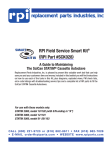


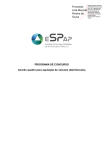
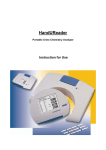
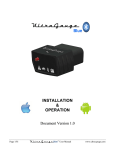
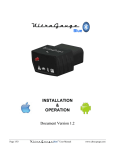
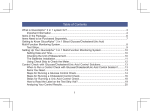
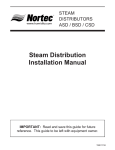
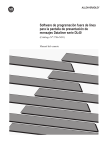
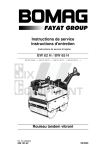

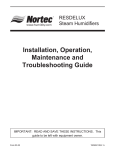
![[Competition Commission Undertaking No [ ] of 2004]](http://vs1.manualzilla.com/store/data/006010311_1-21996dba8872f587e5a78ef073ded048-150x150.png)